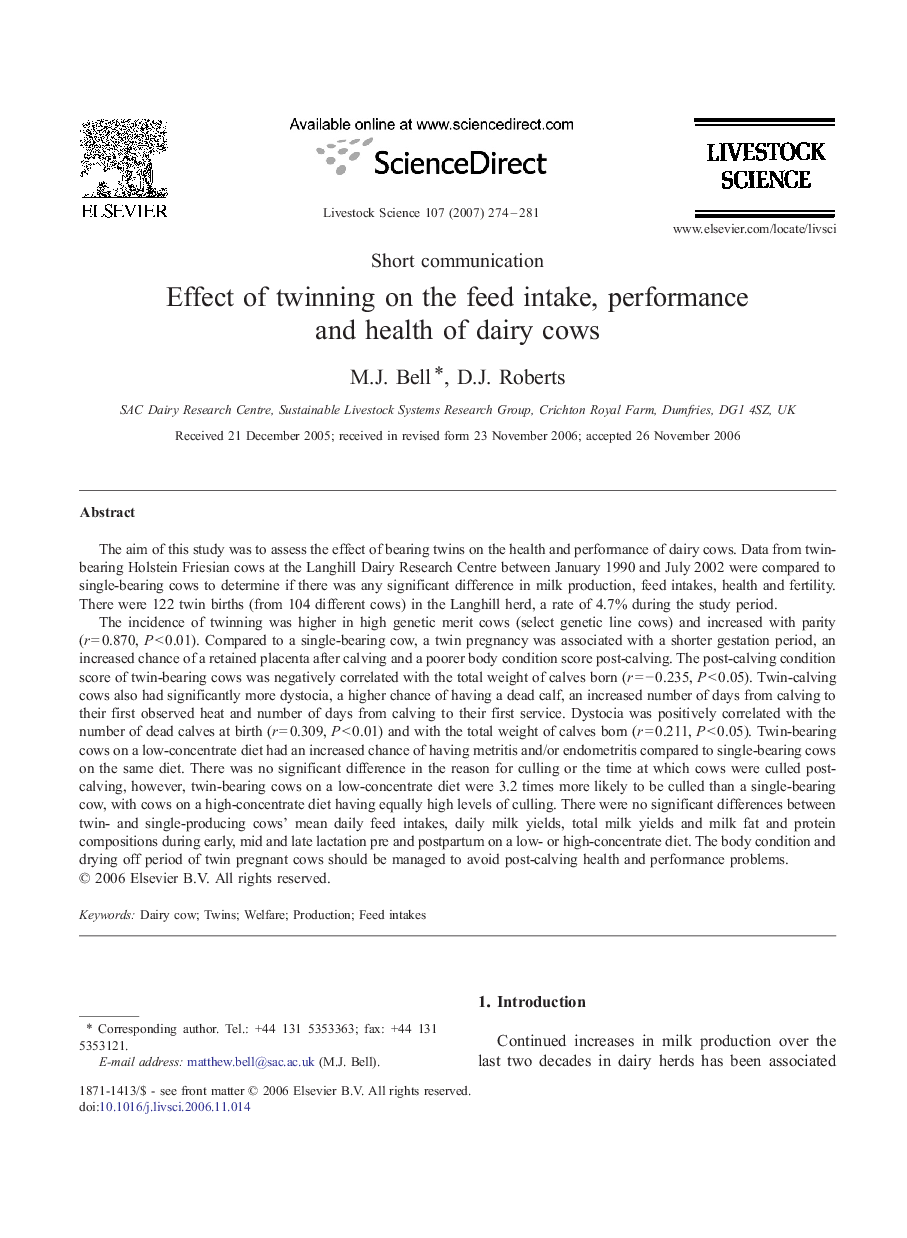| کد مقاله | کد نشریه | سال انتشار | مقاله انگلیسی | نسخه تمام متن |
|---|---|---|---|---|
| 2449059 | 1554027 | 2007 | 8 صفحه PDF | دانلود رایگان |

The aim of this study was to assess the effect of bearing twins on the health and performance of dairy cows. Data from twin-bearing Holstein Friesian cows at the Langhill Dairy Research Centre between January 1990 and July 2002 were compared to single-bearing cows to determine if there was any significant difference in milk production, feed intakes, health and fertility. There were 122 twin births (from 104 different cows) in the Langhill herd, a rate of 4.7% during the study period.The incidence of twinning was higher in high genetic merit cows (select genetic line cows) and increased with parity (r = 0.870, P < 0.01). Compared to a single-bearing cow, a twin pregnancy was associated with a shorter gestation period, an increased chance of a retained placenta after calving and a poorer body condition score post-calving. The post-calving condition score of twin-bearing cows was negatively correlated with the total weight of calves born (r = − 0.235, P < 0.05). Twin-calving cows also had significantly more dystocia, a higher chance of having a dead calf, an increased number of days from calving to their first observed heat and number of days from calving to their first service. Dystocia was positively correlated with the number of dead calves at birth (r = 0.309, P < 0.01) and with the total weight of calves born (r = 0.211, P < 0.05). Twin-bearing cows on a low-concentrate diet had an increased chance of having metritis and/or endometritis compared to single-bearing cows on the same diet. There was no significant difference in the reason for culling or the time at which cows were culled post-calving, however, twin-bearing cows on a low-concentrate diet were 3.2 times more likely to be culled than a single-bearing cow, with cows on a high-concentrate diet having equally high levels of culling. There were no significant differences between twin- and single-producing cows' mean daily feed intakes, daily milk yields, total milk yields and milk fat and protein compositions during early, mid and late lactation pre and postpartum on a low- or high-concentrate diet. The body condition and drying off period of twin pregnant cows should be managed to avoid post-calving health and performance problems.
Journal: Livestock Science - Volume 107, Issues 2–3, April 2007, Pages 274–281